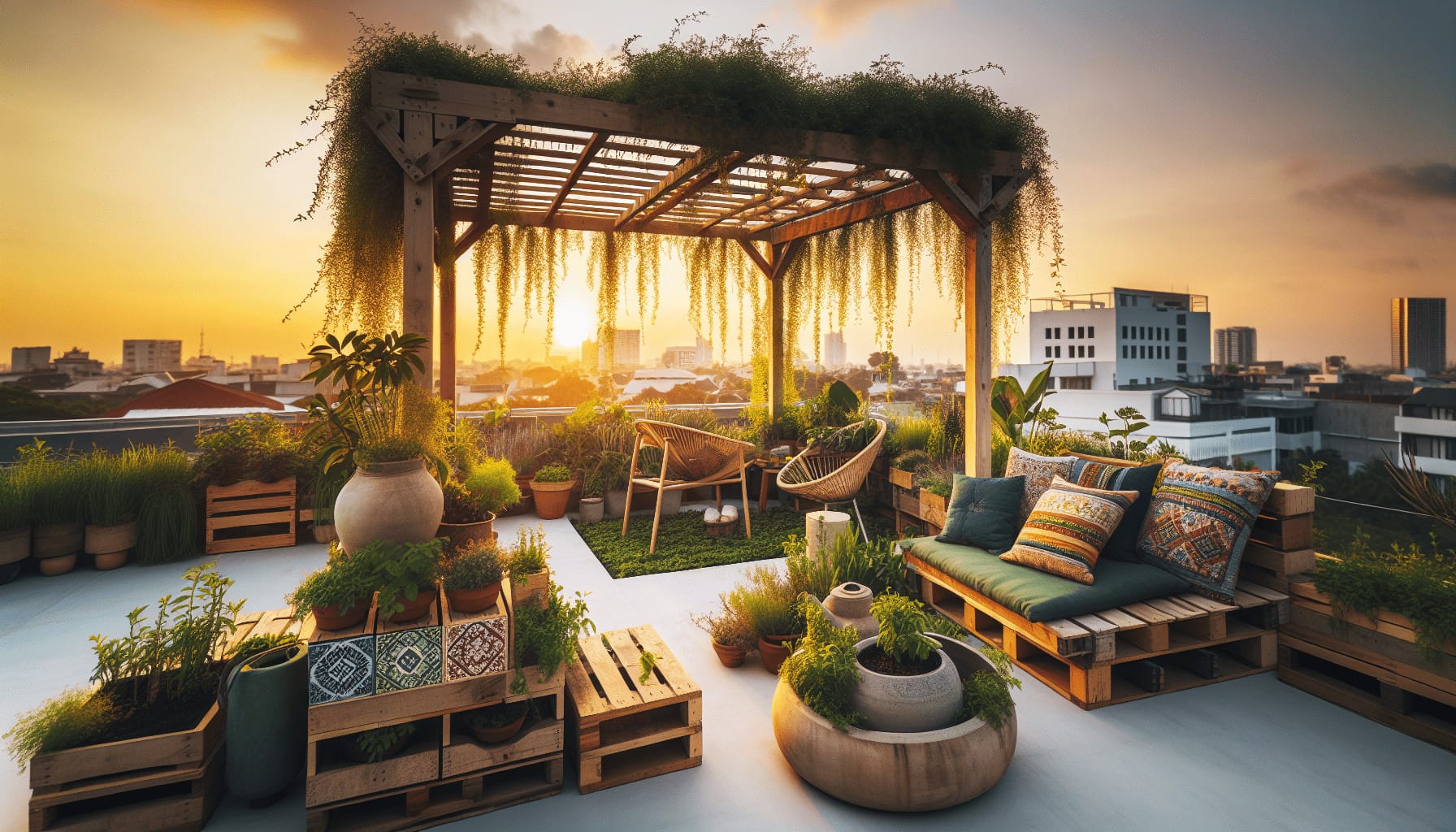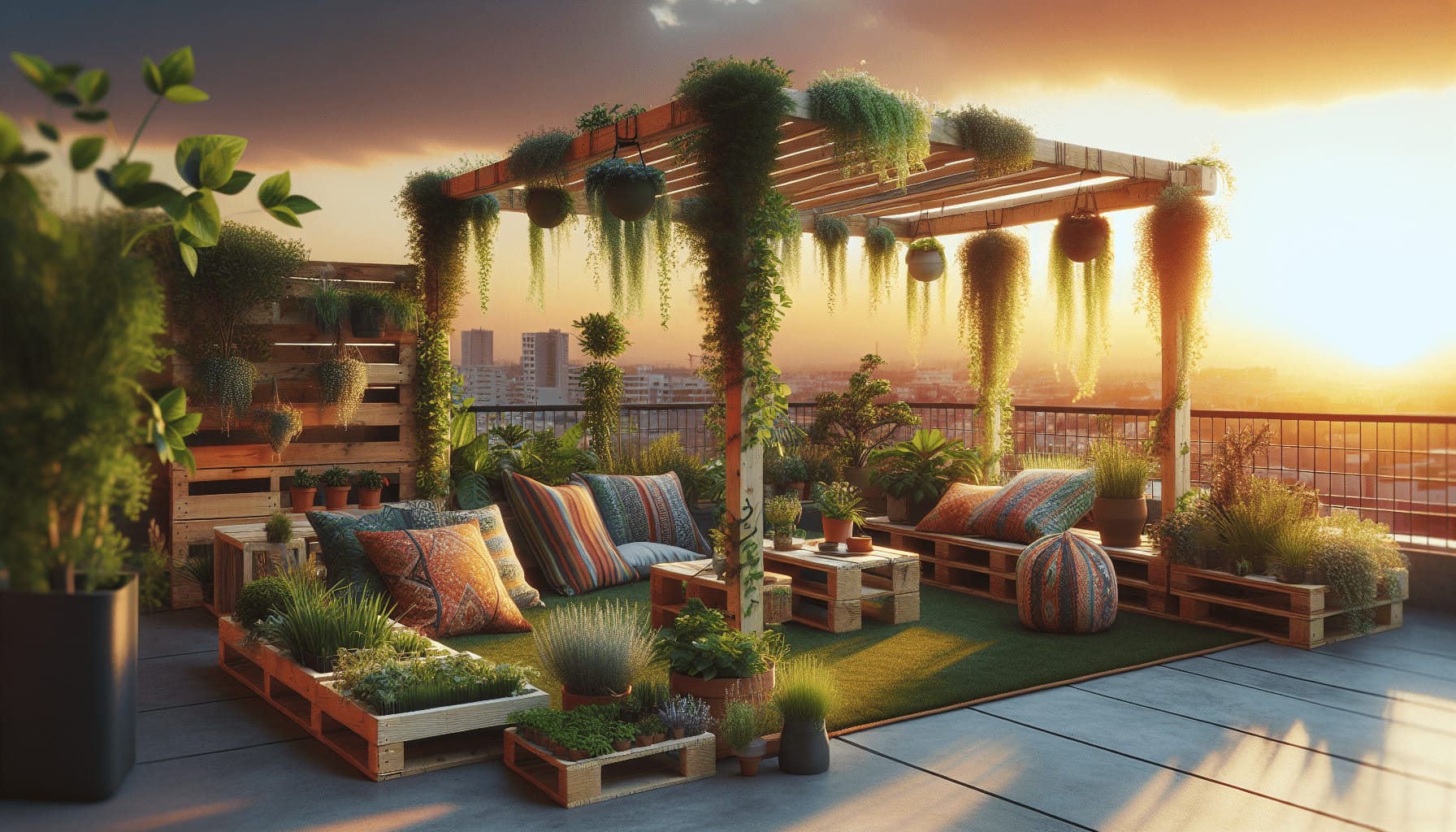Have you ever looked up at your rooftop and wondered how it could become your personal oasis? Transforming an underutilized rooftop into a lush, inviting garden can be an exciting project that not only enhances your living space but also boosts your property’s value. With the right strategies, creating an enchanting rooftop garden doesn’t have to break the bank. This guide will walk you through budget-friendly DIY ideas for structures that can elevate your rooftop garden into a verdant, peaceful sanctuary.
Understanding Your Space
Before you start planning your rooftop garden, it’s essential to assess your space carefully. Knowing the limitations and potentials of your rooftop will guide you in making the best decisions regarding design, materials, and structures.
Evaluating Weight and Load Capacity
Rooftops have weight limitations, so understanding your roof’s load capacity is critical. You might wonder how much weight it can handle, especially with soil, plants, and structures. It’s advisable to consult with a structural engineer or professional to ensure your plans are safe.
Considering Weather Conditions
Weather plays a crucial role in planning a rooftop garden. Wind, sun exposure, and rain patterns need to be considered to protect your plants and structures. Think about whether you’ll need windbreaks or shading in specific areas.
Accessibility and Utilities
How easily can you access your rooftop? Are there water and electrical outlets available? Ensuring the accessibility of utilities will make maintenance much easier. You wouldn’t want to carry water manually every time you need to irrigate your plants.
Planning Your Rooftop Garden Layout
Once you have a good understanding of the physical constraints and opportunities your rooftop presents, planning your layout becomes a creative task. Functionality and aesthetics should go hand in hand to maximize the space’s potential.
Designing for Functionality
Consider how you want to use your rooftop garden. Will it be a place for relaxation, growing vegetables, or hosting guests? This will determine the layout and help you decide on furniture and plants. Prioritize practical pathways that connect different areas without obstructing movement.
Aesthetic Considerations
Think about the visual appeal too. Will your garden follow a theme or style? You might opt for a minimalist look, a rustic charm, or a vibrant jungle vibe. Balancing plant colors, textures, and the structure materials will be crucial for creating a harmonious space.

Budget-Friendly Materials and Ideas
Creating a stunning rooftop garden doesn’t have to be expensive. Many materials and creative strategies can help you achieve beautiful results without overspending.
Using Recycled and Upcycled Materials
One sustainable and cost-effective way to build your rooftop garden is by using recycled materials. Old pallets, reclaimed wood, and shipping crates can be transformed into plant containers or garden furniture. Look for second-hand shops or online marketplaces for bargain finds.
Opting for Lightweight Materials
Lightweight materials help manage the roof’s load limit. Containers made of lightweight plastics, aluminum, or fiberglass can replace heavier options like stone or terracotta. These materials can also be painted or decorated to fit your desired style.
DIY Decking Solutions
A small deck can define space and improve the usability of your rooftop garden. Instead of hiring someone, consider building a DIY deck using easy-to-install interlocking tiles. These can be made from wood, bamboo, or even recycled materials and don’t require nails or glue.
Building Structural Elements
Integrating structures like planters, pergolas, trellises, and seating areas can enhance your rooftop garden’s functionality and appearance.
Crafting DIY Planters
Planters are essential for any garden. Crafting your own can save money and add a personal touch to your space.
Simple Wooden Planters
Using wood pallets, you can create simple, stylish planters. Cut the pallets into desired sizes, assemble them into boxes, and line them with plastic to prevent moisture damage. Paint or stain them to protect against weather conditions.
Vertical Planters
Maximize space by going vertical. Old ladders, shoe organizers, or gutter pieces can be mounted on walls to create green walls. These are perfect for growing herbs or succulents without using valuable floor space.
Installing Pergolas and Trellises
Pergolas and trellises can provide shade and support climbing plants, transforming your rooftop garden into a cozy retreat.
Simple DIY Pergolas
Build a basic pergola frame using sturdy wooden beams or galvanized steel pipes. Ensure the pergola is firmly secured against strong winds. Climbing plants like roses or wisteria can wrap around it, adding beauty and shade.
Trellises for Climbing Plants
Trellises can be made using metal wires, bamboo sticks, or wooden slats. They’ll support plants like clematis or grapevines, adding vertical green layers to your space.
Crafting DIY Garden Furniture
Comfortable furniture can elevate your rooftop garden experience and create a multifunctional space.
Pallet Furniture
Pallets can be turned into cozy sofas or coffee tables with minimal effort. Sand them down, stack, and secure them together to form seating areas. Add cushions and throws for comfort.
Upcycled Seating
Look for old furniture that can be refurbished. Wooden chairs can be repainted or reupholstered, while metal frames can be given a new life with a fresh coat of paint.

Enhancing Your Rooftop with Plants
Choosing the right plants is key to a thriving rooftop garden, considering weight, sun exposure, and maintenance.
Selecting the Right Plants
Choose plants that can thrive in rooftop conditions. Drought-resistant species are ideal, as they require less water and can withstand direct sunlight.
Herb Gardens
Herbs like thyme, basil, and mint do well in pots and can be harvested fresh for your cooking.
Flowering Plants
Geraniums, lavender, and marigolds add color and fragrance, while being relatively low-maintenance.
Arranging Plants for Aesthetics and Health
Cluster plants according to their water and sunlight needs. Grouping plants also creates an impactful visual appeal, akin to a natural ecosystem.
Sustainable Practices for Rooftop Gardens
Sustainable practices will not only reduce the environmental impact but also cut down on costs in the long run.
Water Conservation Techniques
Install a rainwater harvesting system to collect and use rainwater. Drip irrigation systems can efficiently deliver water to your plants with minimal waste.
Soil and Composting Solutions
Use lightweight potting soil designed for containers. Start composting kitchen scraps to create nutrient-rich soil amendments for your plants, reducing waste and enriching soil.
Maintenance Tips for Longevity
Regular maintenance ensures the longevity and beauty of your rooftop garden.
Seasonal Care
Understand the maintenance needs each season demands. In summer, focus on watering and pest control. In winter, protect plants from frost and prune as necessary.
Preventing Common Issues
Keep a lookout for pests and diseases that could harm your plants. Regularly clean and repair structures to prevent damage and prolong their life.
Conclusion
Creating your rooftop garden with affordable DIY structures can be an enriching experience. By carefully planning, using budget-friendly materials, and following sustainable practices, you can transform an ordinary rooftop into a lush garden oasis. Not only will you enjoy a personal retreat, but you’ll also be adopting a green practice that benefits the environment. Now, get inspired to turn your vision into a reality, knowing that stunning gardens don’t always require extravagant budgets.
